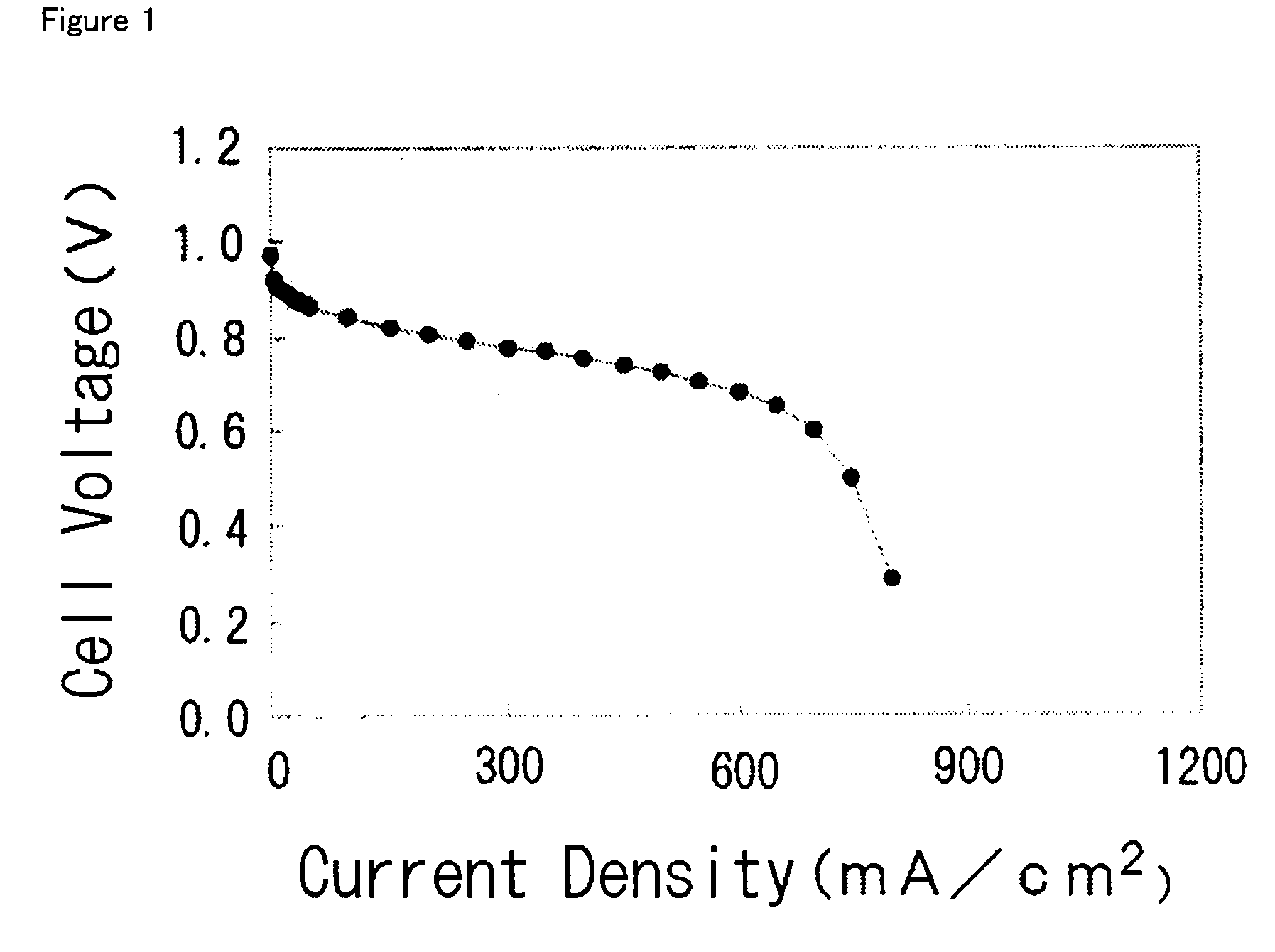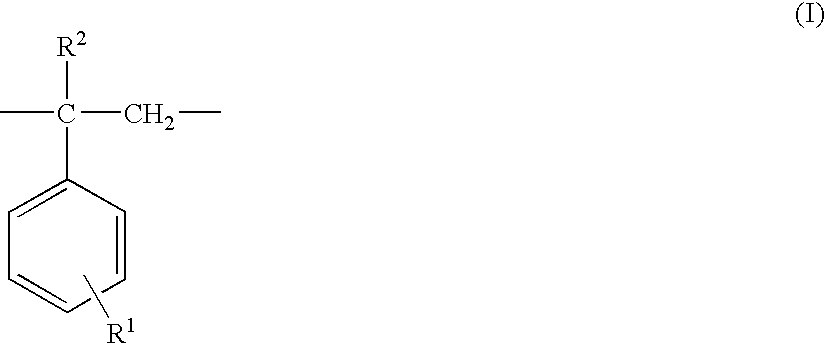Polymer electrolyte, polymer electrolyte membrane, membrane-electrode assembly and polymer electrolyte fuel cell
a technology of electrolyte and polymer, which is applied in the direction of fuel cell details, conductive materials, non-aqueous electrolytes, etc., can solve the problems of reducing the performance of fluoropolymers during long-time power generation tests, limited time during which stable operation is possible, and high cost of fluoropolymers. , to achieve the effect of excellent moldability, excellent durability and heat resistance, and stable performan
- Summary
- Abstract
- Description
- Claims
- Application Information
AI Technical Summary
Benefits of technology
Problems solved by technology
Method used
Image
Examples
referential example 1
Preparation of 1-(4-vinylphenyl)adamantane
[0103]1-(4-vinylphenyl)adamantane (20 g) was synthesized in the same manner as in the process described in JP-A-2006-96988.
example 1
(a) Synthesis of a Block Copolymer Comprising Polystyrene (Polymer Block (A)), Hydrogenated Polyisoprene (Polymer Block (B)) and Poly[1-(4-vinylphenyl)adamantane] (Polymer Block (C))
[0104]After 526 ml of dehydrated cyclohexane and 2.89 ml of sec-butyllithium (1.3M-cyclohexane solution) were put in a 1,400-ml autoclave, a cyclohexane solution of 1-(4-vinylphenyl)adamantane (1-(4-vinylphenyl)adamantane: 27 g, cyclohexane: 200 ml), 27.5 ml of styrene and 70.4 ml of isoprene were added successively to subject each of them to polymerization at 45° C., and then 35.3 ml of a solution of 3% by mass of phenyl benzoate in cyclohexane was added to conduct coupling reaction, whereby a poly(1-(4-vinylphenyl)adamantane)-b-polystyrene-b-polyisoprene-b-polystyrene-b-poly(1-(4-vinylphenyl)adamantane) (hereinafter, abbreviated as AdSSISAdS) was synthesized. The number average molecular weight (GPC measurement, in terms of polystyrene) of the obtained AdSSISAdS was 136,400, and the amount of the 1,4-b...
example 2
(a) Preparation of a Block Copolymer Comprising Polystyrene (Polymer Block (A)), Hydrogenated Polyisoprene (Polymer Block (B)) and Poly[1-(4-vinylphenyl)adamantane] (Polymer Block (C))
[0109]After 29 ml of dehydrated cyclohexane and 0.17 ml of sec-butyllithium (1.3M-cyclohexane solution) were put in a 200-ml egg-plant type flask equipped with a three way cock, a cyclohexane solution of 1-(4-vinylphenyl)adamantane (1-(4-vinylphenyl)adamantane 2.34 g, cyclohexane 40 ml), 0.86 ml of styrene and 4.24 ml of isoprene were added successively to subject each of them to polymerization at 45° C., and then 0.8 ml of a solution of 3% by mass of phenyl benzoate in cyclohexane was added to conduct coupling reaction, whereby a poly (1-(4-vinylphenyl)adamantane)-b-polystyrene-b-polyisoprene-b-polystyrene-b-poly (1-(4-vinylphenyl)adamantane)(AdSSISAdS) was synthesized. The number average molecular weight (GPC measurement, in terms of polystyrene) of the obtained AdSSISAdS was 81,410, and the amount o...
PUM
| Property | Measurement | Unit |
|---|---|---|
| softening point | aaaaa | aaaaa |
| softening point | aaaaa | aaaaa |
| softening point | aaaaa | aaaaa |
Abstract
Description
Claims
Application Information
 Login to View More
Login to View More - R&D
- Intellectual Property
- Life Sciences
- Materials
- Tech Scout
- Unparalleled Data Quality
- Higher Quality Content
- 60% Fewer Hallucinations
Browse by: Latest US Patents, China's latest patents, Technical Efficacy Thesaurus, Application Domain, Technology Topic, Popular Technical Reports.
© 2025 PatSnap. All rights reserved.Legal|Privacy policy|Modern Slavery Act Transparency Statement|Sitemap|About US| Contact US: help@patsnap.com



